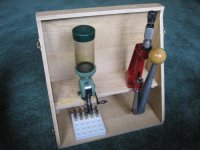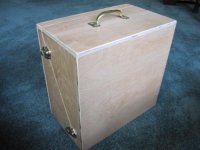H
Hombre0321
Guest
A fellow poster has a thread about load work-up. In some of the response's it has been recommended that he should load at the range. I know this is a common pratice for benchrest Shooters, but it raises a few questions.
These questions may be elememtry in nature, and old hat to you experianced guys but those of us or at least me ( I guess I shouldn't pretend to speak for a group like "US") need to now the "HOW" of doing this, and the goals and rewards of loading at the range thus loading for the conditions.
I do realize a few fundamentals of this type of loading as it pertains to equipment. Such as a press and dies. But what are you using for "Scales"? Is not the wind at the range a factor here? What about a changes in the load as it may pertain to the conditions? How have you determined what changes to make and when?
Any light you guys can shed on this would be good, as right now I am in the dark....
Roland
These questions may be elememtry in nature, and old hat to you experianced guys but those of us or at least me ( I guess I shouldn't pretend to speak for a group like "US") need to now the "HOW" of doing this, and the goals and rewards of loading at the range thus loading for the conditions.
I do realize a few fundamentals of this type of loading as it pertains to equipment. Such as a press and dies. But what are you using for "Scales"? Is not the wind at the range a factor here? What about a changes in the load as it may pertain to the conditions? How have you determined what changes to make and when?
Any light you guys can shed on this would be good, as right now I am in the dark....
Roland




